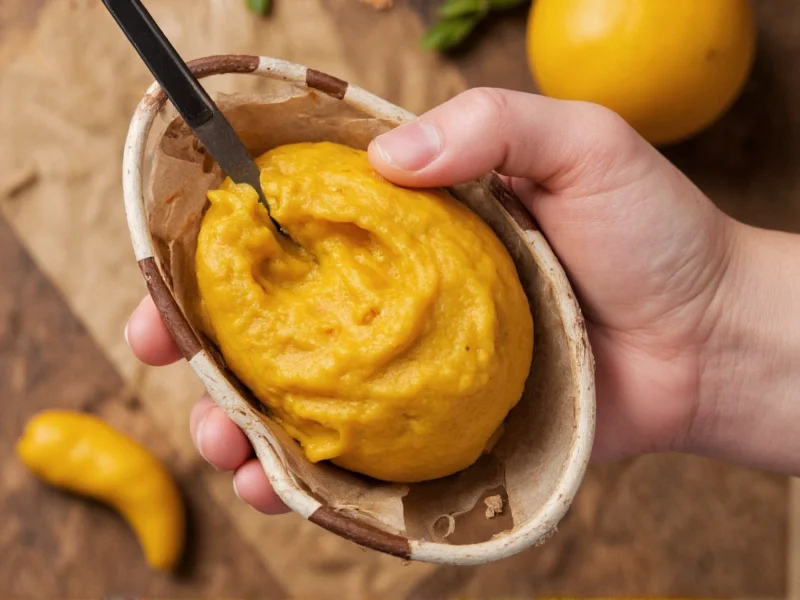Germany's mustard heritage dates back to medieval times when mustard seeds were cultivated along the Rhine River. The country developed distinctive regional styles that remain popular today. Düsseldorf mustard, known for its sharp, tangy flavor with hints of horseradish, contrasts with Bavarian sweet mustard (süßer Senf), which features a milder, sweeter profile perfect for pairing with Weisswurst and other traditional dishes.
Historical Development of German Mustard
Mustard production in Germany traces its origins to monastic kitchens in the 9th century. Monks cultivated mustard seeds not only for culinary use but also for medicinal purposes. By the 13th century, mustard making had become a specialized craft, with guilds establishing quality standards. The city of Düsseldorf emerged as a mustard center during the 17th century, developing its signature sharp variety that remains popular today.
Key German Mustard Varieties
German mustard encompasses several distinct regional varieties, each with unique characteristics:
| Variety | Region | Flavor Profile | Typical Ingredients |
|---|---|---|---|
| Düsseldorf Mustard | Rhineland | Sharp, tangy, slightly horseradish-forward | Brown mustard seeds, vinegar, horseradish, spices |
| Bavarian Sweet Mustard | Bavaria | Mild, sweet, slightly tangy | Yellow mustard seeds, sugar, vinegar, paprika |
| Whole Grain Mustard | National | Robust, textured, complex | Mixed mustard seeds, wine vinegar, herbs |
| Beer Mustard | Regional variations | Malty, complex, slightly bitter | Mustard seeds, regional beer, spices |
Traditional Production Methods
Authentic German mustard production follows time-honored techniques that contribute to its distinctive quality. Traditional methods involve stone grinding mustard seeds to preserve flavor compounds that high-speed industrial processing might destroy. The fermentation process, where ground seeds rest with vinegar and spices for several days, develops the complex flavor profile characteristic of premium German mustard varieties.
Unlike mass-produced American mustards that often use yellow mustard seeds exclusively, German producers typically blend brown and black mustard seeds for greater depth of flavor. The vinegar selection also varies regionally, with wine vinegar common in western Germany and apple cider vinegar more prevalent in northern regions.
Cultural Significance in German Cuisine
Mustard plays an integral role in German culinary traditions. In Bavaria, süßer Senf (sweet mustard) is considered essential for serving with Weisswurst, a traditional white sausage. The proper preparation involves serving the mustard at room temperature in a small bowl alongside the sausage, never mixed directly with the meat.
German mustard also features prominently in regional dishes like Senfrostbraten (mustard roast beef) and Senfsoße (mustard sauce) served with boiled potatoes and schnitzel. The condiment's versatility extends to marinades, salad dressings, and even some traditional bread recipes where mustard seeds add flavor and texture.
Identifying Authentic German Mustard
When seeking authentic German mustard products, look for specific indicators of quality and origin. Traditional German mustards typically list simple, recognizable ingredients without artificial preservatives or thickeners. The texture should be coarse rather than perfectly smooth, reflecting traditional stone grinding methods.
Authentic German mustard brands often include regional identifiers like "Original Düsseldorfer" or "Bayerischer Süßer Senf" on their labels. The best products typically come from established German producers with long histories, such as Löwensenf, Assmannshausen, or Thomy, rather than generic "German-style" products made elsewhere.
Culinary Applications and Pairing Suggestions
German mustard's diverse flavor profiles make it suitable for various culinary applications beyond traditional pairings. Sharp Düsseldorf mustard enhances grilled meats and sandwiches, while Bavarian sweet mustard complements not only sausages but also roasted vegetables and potato salads.
Chef-recommended pairings include:
- Düsseldorf mustard with roast beef and horseradish cream
- Bavarian sweet mustard with soft pretzels and cheese
- Whole grain German mustard in vinaigrettes for hearty salads
- Beer mustard with smoked sausages and sauerkraut
For home cooking, German mustard can elevate everyday dishes. Try mixing Düsseldorf mustard with sour cream for a quick dip, or incorporate sweet mustard into potato salad recipes for authentic German flavor.
Differences Between German and Other Mustard Traditions
Understanding how German mustard differs from other varieties helps appreciate its unique qualities. French mustard typically features a smoother texture and often includes white wine, while English mustard is known for its intense heat from higher concentrations of brown mustard seeds and turmeric.
American yellow mustard, the most widely consumed variety globally, uses primarily yellow mustard seeds with vinegar and turmeric, resulting in a milder, brighter yellow product. German mustard varieties generally offer more complex flavor profiles with regional variations that reflect local culinary traditions rather than a single standardized product.
Maintaining Quality in Modern Production
While traditional German mustard production methods remain valued, modern producers have adapted techniques to maintain quality while meeting contemporary food safety standards. Many premium German mustard makers still use stone mills for grinding seeds, preserving the traditional texture and flavor development that high-speed industrial processing might compromise.
The best German mustard producers maintain strict quality control over ingredient sourcing, particularly the mustard seeds, which are often imported from specific regions known for optimal growing conditions. The fermentation process remains largely unchanged, allowing flavors to develop naturally over several days rather than using artificial flavor enhancers.











 浙公网安备
33010002000092号
浙公网安备
33010002000092号 浙B2-20120091-4
浙B2-20120091-4